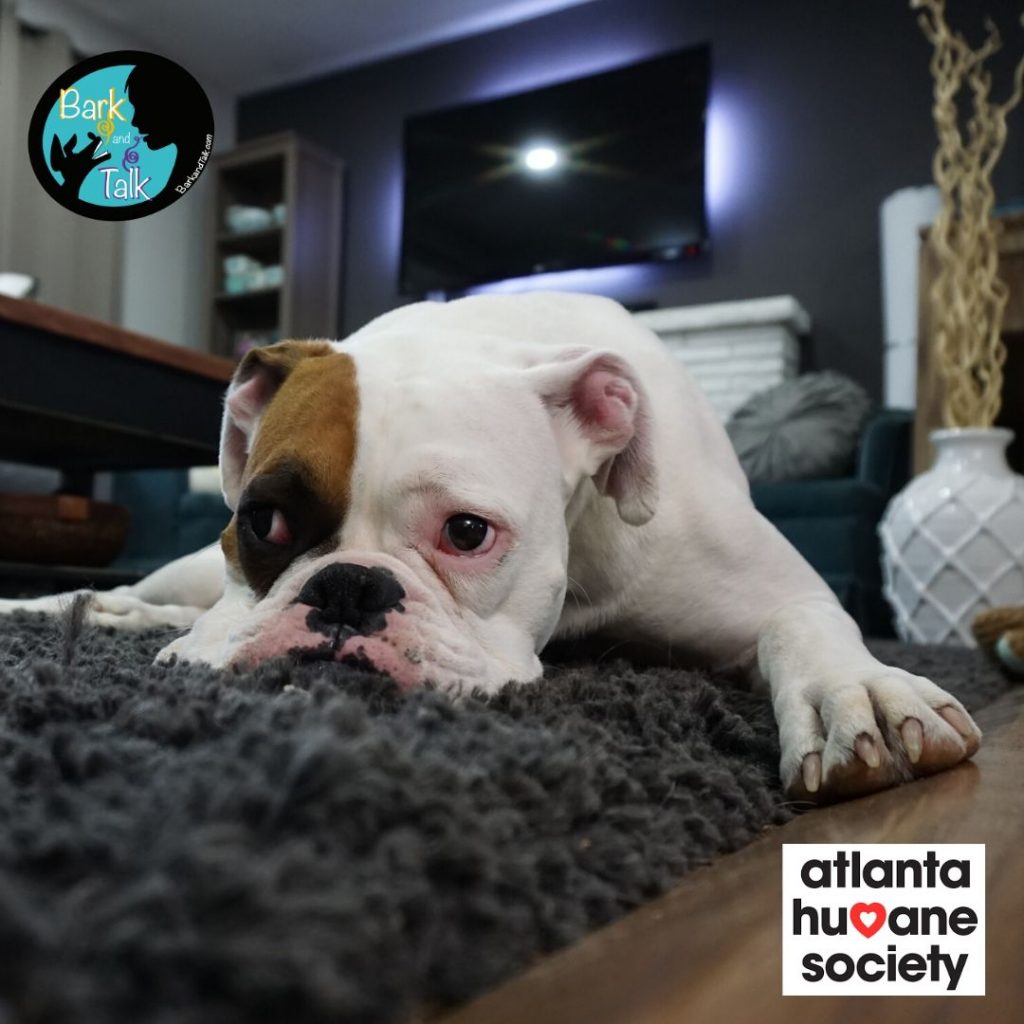Separation Anxiety in Pets
 Submitted by the Atlanta Humane Society
Submitted by the Atlanta Humane Society
Because your routine has likely changed over the past few months, things have changed dramatically for your pets as well. You may be seeing some behaviors that you didn’t notice before, which can be a sign of stress in your pet. The best thing to do for pets now is to create a routine. Pets thrive on consistency and by creating a routine it can help eliminate separation anxiety for when you return to work.
WHAT IS SEPARATION ANXIETY IN PETS?
Separation anxiety is viewed as a disorder where the animal experiences distress with separation from a singular person. It’s not necessarily about being left alone, it’s about being separated from a person they have bonded to. Separation anxiety has been studied and observed more so in dogs than in cats; however, cats may develop similar separation reactions.WHAT ARE SYMPTOMS?
The symptoms can range from mild, moderate, to severe; but some of the most common ones are:
- Panting and pacing
- Self-mutilation: this includes excessive chewing & licking on their bodies to the point of self-inflicted injury. However, injury can occur on the more severe side of their escape attempts.
- Excessive barking, howling, or whining
- Attempts to escape
- Destructive behavior (chewing/digging)
- Excessive salivation/drooling
- Depression
- Diarrhea/vomiting
- Loss of appetite or refusal to eat
- Excessive greeting when the person returns
- Shadowing when the person is there
These symptoms can start from the moment the pet thinks that the person is leaving the home. It has also been observed that dogs fluctuate between highly agitated and depressive states throughout that separation period.
PROVIDE YOUR DOG WITH A ROUTINE AND CONSISTENCY DURING SELF-QUARANTINE:
- Create a comfortable space for your pet away from where you’re working – This can be a crate, laundry room with a baby gate, or a bedroom that you trust them resting in (don’t forget to put away items that your pet might be interested in ingesting or destroying!) Make sure to give them a comfy blanket and a safe and familiar toy to chew or cuddle with.
- Practice short absences such as going to the grocery store, a short walk, going for a drive, or simply working outside in the garden without your pet.
- Whenever you leave them alone, provide a tasty frozen Kong or stuffed food toy – that way they begin to associate your absence with getting something delicious to keep them occupied.
- While your pet is practicing separation at home, put on a white noise machine, TV, radio, etc. to block out noise so your pet is not constantly hearing you while you’re working. This can also helpful when you are physically absent from the home as well.
Quick tip: When choosing a background noise for your pet, be sure to choose something calming and keep it on a lower volume. You can try classical music, talk radio shows/NPR, a podcast, or try searching for “dog music” on YouTube or your favorite music app.
POST SELF-QUARANTINE:
- Your pet has likely become accustomed to the increased enrichment you’ve been doing – keep it up when you go back to work! Try to maintain the same number of walks if possible, or if your self-quarantine is ending soon, try to wane the number of walks per day back to a more reasonable number that you can maintain when your schedule goes back to normal.
- Provide the same mental enrichment – continue feeding them their meals from fun stuffed food toys, puzzles, or games – if your pet has been working for their meals, make sure to keep that up.
- Continue leaving your pet with a tasty food toy or treat when you leave the house for work to solidify the positive association with your departure.
- When you return to work outside the home, continue playing your pet’s favorite white noise, classical music, or other background noise during your absence.
Remember, not all destructive or repetitive behaviors mean your dog is experiencing separation anxiety.
You can help your pet be their best self by watching out for destructive behaviors or signs that your pet isn’t getting enough physical or mental exercise and ensuring you’re doing everything you can to mitigate your dog’s frustration or boredom to encourage more positive behaviors.
If your dog seems bored… try increasing their physical activity in combination with increasing mental enrichment like food puzzles or toys.
If your dog is anxious in a small confined space… try increasing the size of their confined space by moving them to a laundry room with a baby gate or a separate bedroom. Alternatively, you can work on reintroducing them to their crate through positive association exercises.
If your dog is having accidents in the house… they may not have mastered potty training yet. If this is daunting for you, don’t be afraid to consult an expert or trainer.
If your dog is barking excessively… they may believe that barking will get them the attention they want. You and your pet may benefit from talking with a professional to establish healthy boundaries and interactions.
If your pet is exhibiting behaviors that you feel unable to handle on your own, don’t worry! You can schedule a completely free virtual behavior assistance appointment with AHS Trainer Mailey McLaughlin.
